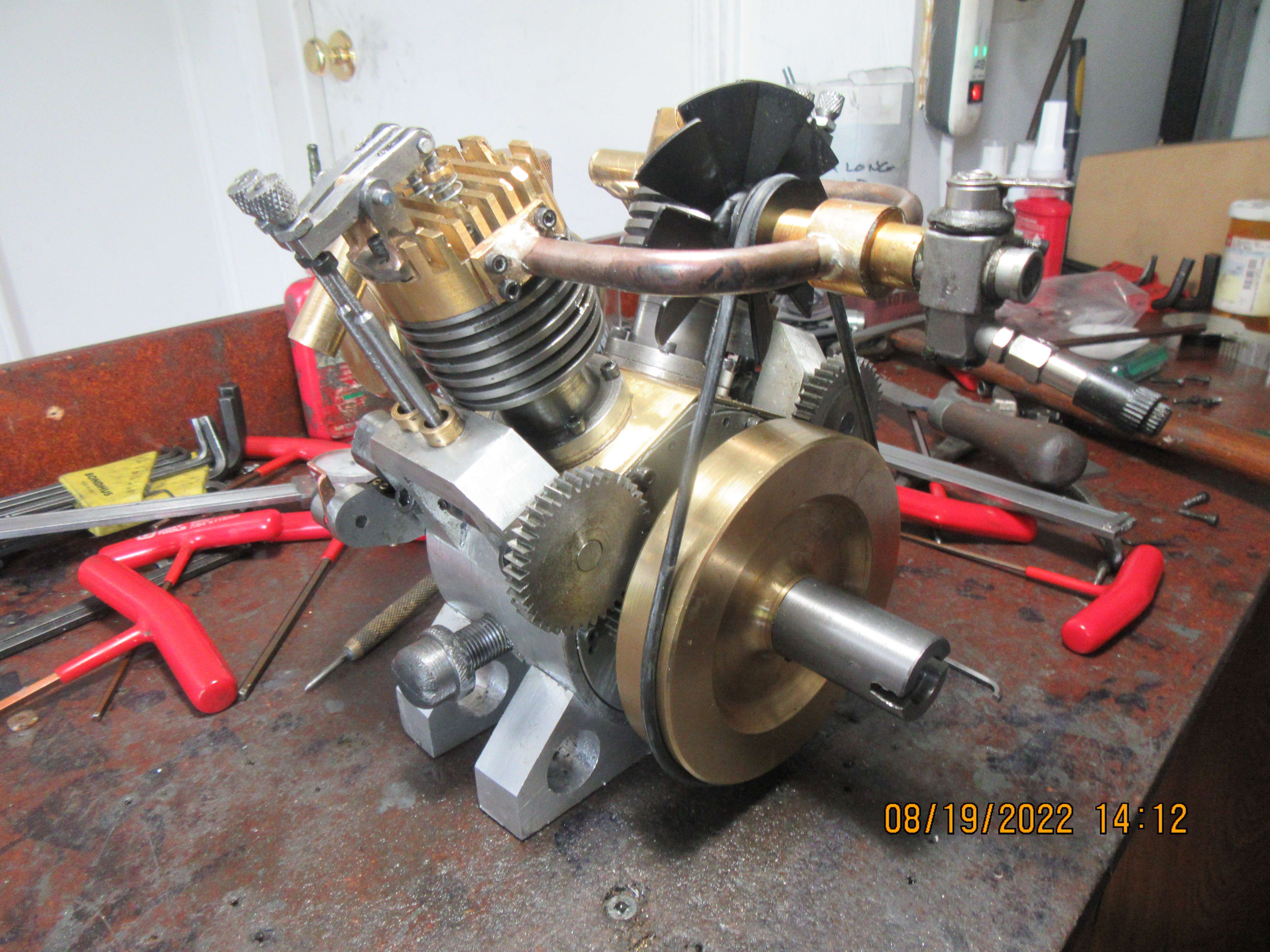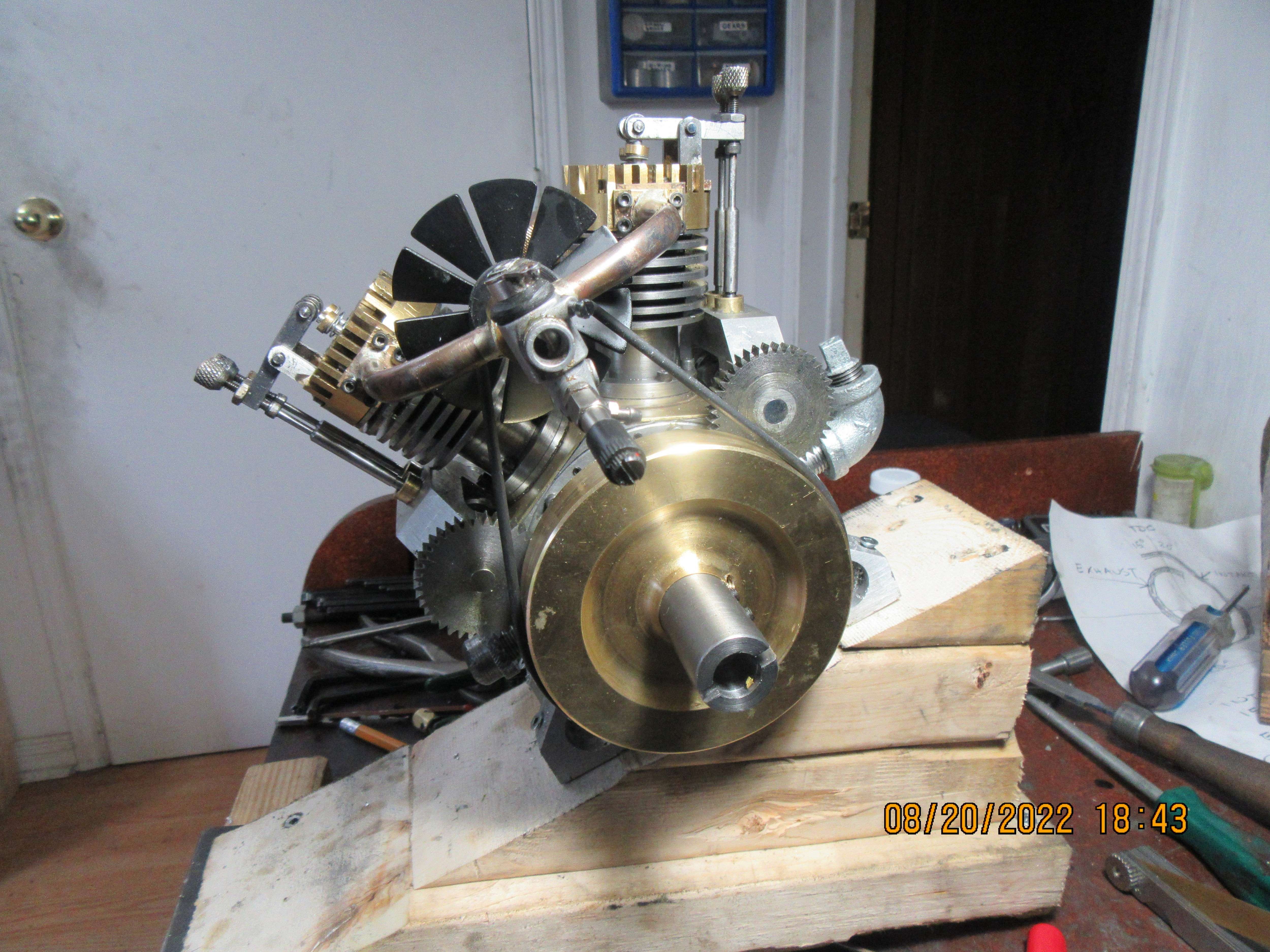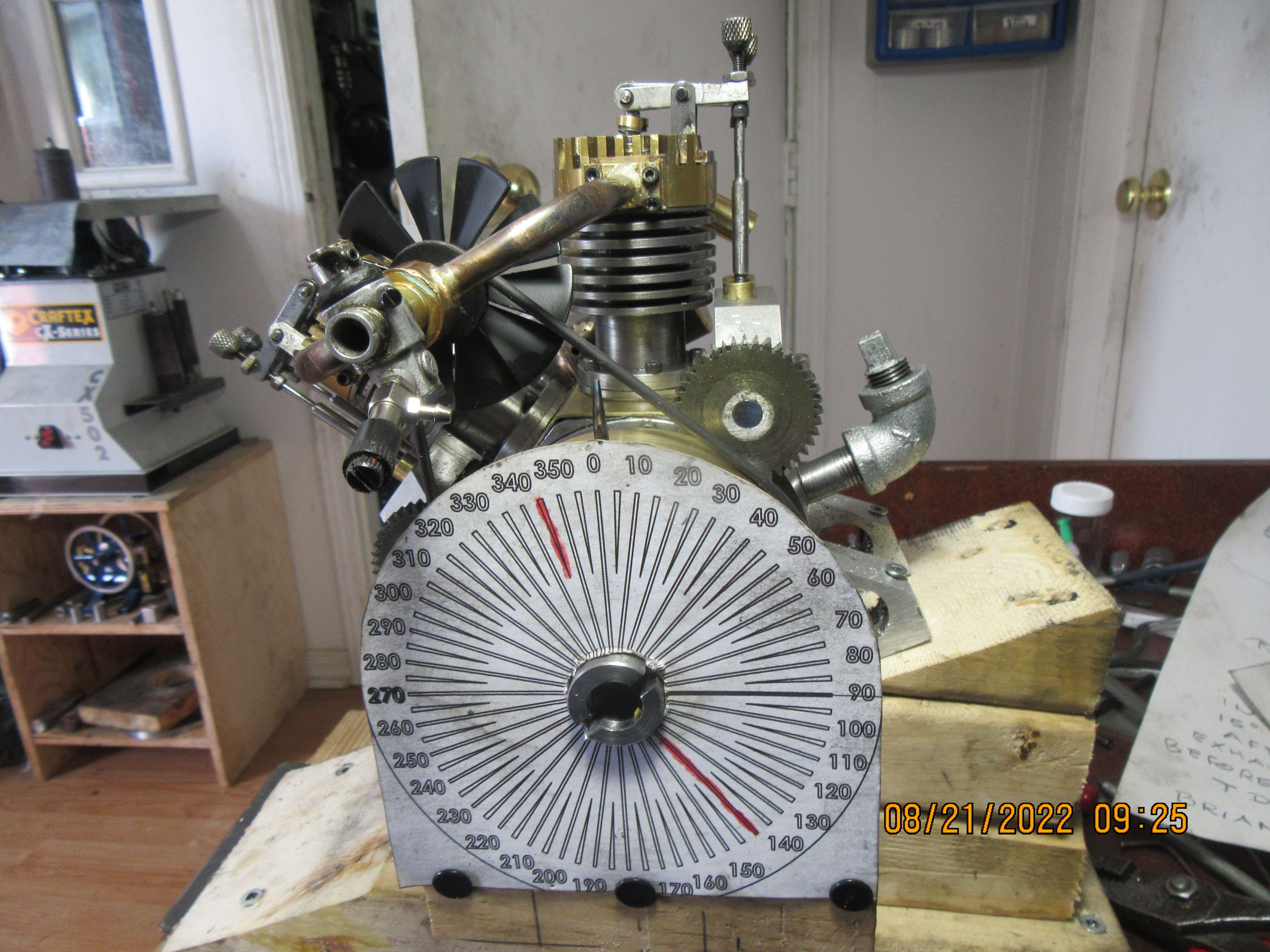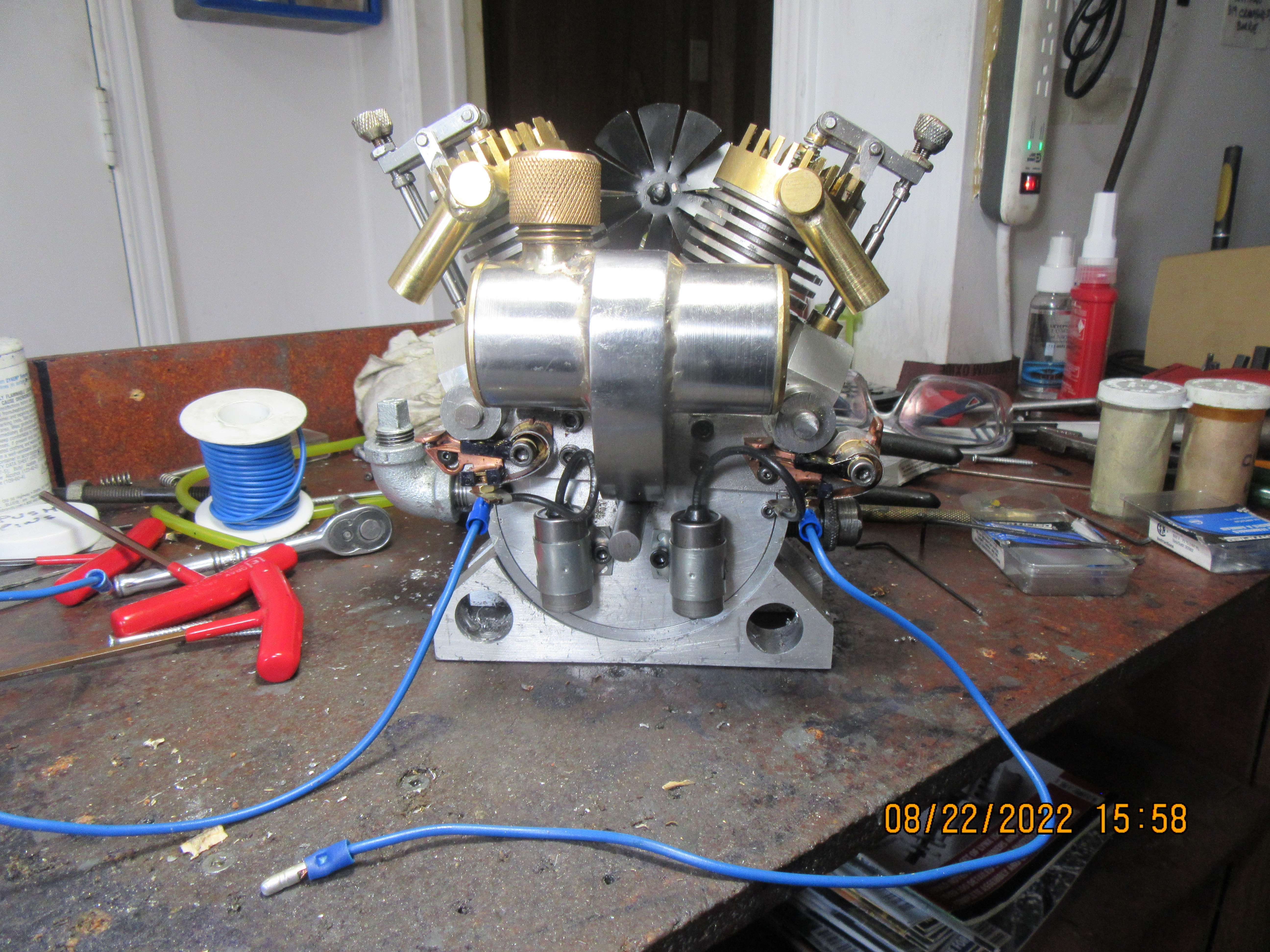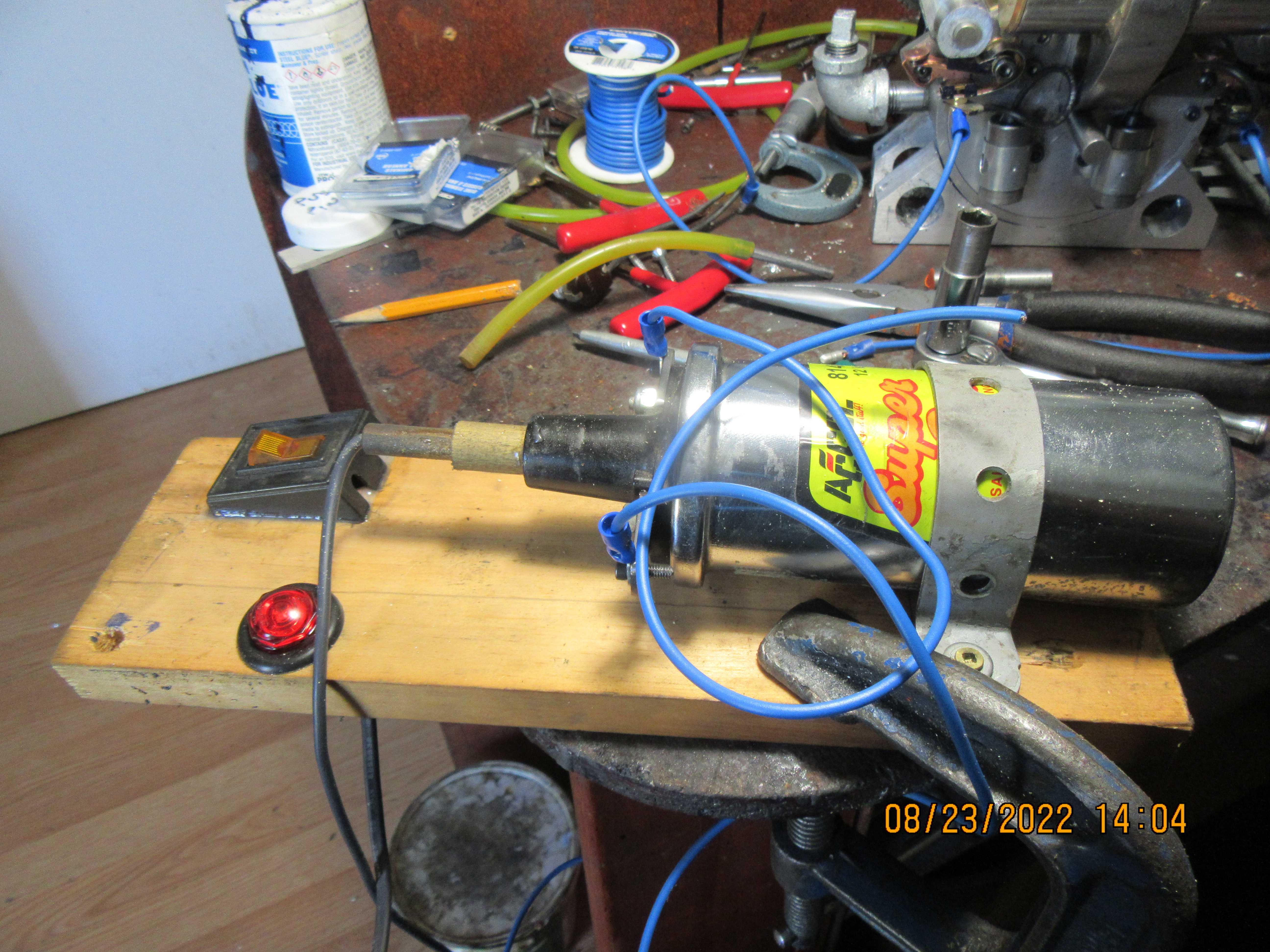Hi Gordon, while I do not really understand these things, I have heard of twins at 360 degrees, 180 degrees, 75 degrees, 45 degrees, 60 degrees, 90 degrees, and someat weird numbers, all to do with variations on balance factors. Brian uses 50 degrees. He can explain that one. But racing bike multi-cyinder engines sometimes have 2 cylinders firing together, for a big- bang effect which gives the rider more feel for the rear wheel grip when cornering!
The v-twin makers either do it for packaging, or for balance, when the axial imbalance of one cylinder can be off-set against the transverse imbalance of con-rod etc. waggling sideways back and fro....
I have a book on steam loco design where balance of engines, rods, wheels all combine and the same equations can be used on infernal combustion engines.... or a bit of fiddling with a stick-on weight or 2 on the flywheel!
So all things are possible?
Does that help?
K2
